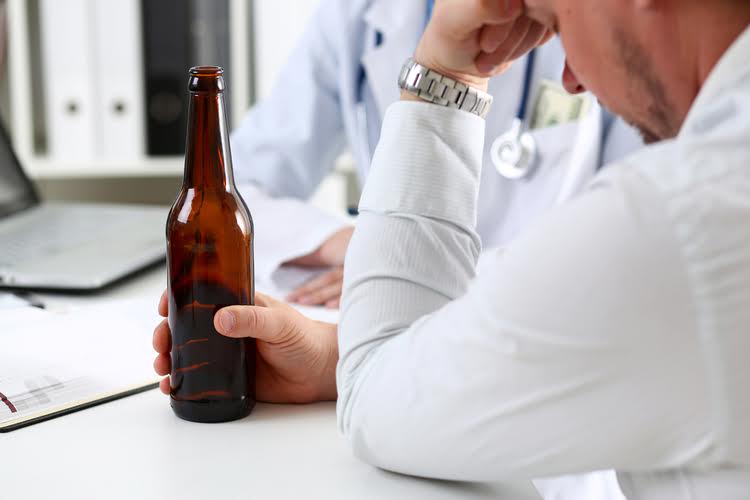TIN TỨC
Alcohol use in teens: Risks, statistics, and prevention
Understanding the difference between casual use and abuse is key for parents, guardians, and educators to recognize when help is needed. In this blog, we will discuss the signs of teen alcohol abuse, its impact on the developing brain, and how to seek help, offering important guidance to support teens and prevent long-term harm. The first stage involves access to alcohol rather than the use of alcohol, tobacco, inhalants, or other drugs.
Lesson Plans and Activities about Substance Use and Stress Management

People often begin to drink alcohol and use other substances during adolescence. And although adolescents tend to drink alcohol less often than adults, they tend to drink more when they do drink. See Facts and Statistics on Underage Drinking for more alcohol and teens information. Initiating alcohol use at age 12 is linked to a substantially higher risk of heavy episodic drinking and alcohol-related harms by age 20, compared to starting at age 18.
Phone, Video, or Live-Chat Support
Racism and discrimination are sources of stress; they can contribute to the risk that young people of color will have problems with alcohol. Here are more resources for families of color who are concerned about alcohol use. If you’re worried about your teen using alcohol, it may be tempting to take an extremely strict approach or overemphasize the risks of alcohol use. Regardless of the cause of someone’s AUD, it’s important that they receive the treatment and support they need to feel better.
Risk-taking

If you don’t feel you can talk to a parent, reach out to a family friend, older sibling, or school counselor, for example, or call one of the helplines listed below. Witnessing your child struggle with a drinking problem (also known as “alcohol use disorder”) can be as heartbreaking as it is frustrating. Your teen may be falling behind at school, disrupting family life, and even stealing money to finance their habit or getting into legal difficulties. Drinking problems affect families all over the world from every different background. If their friends drink, your teen is more likely to as well, so it’s important you know where your teen goes and who they hang out with.

Alcohol abuse during adolescence often leads to dependency issues in adulthood. Early alcohol use also raises the risk of future mental health disorders, chronic health conditions, and social difficulties. Withdrawing from family activities, spending more time with new or questionable friends, and communicating less with parents are common social indicators of alcohol abuse. Teens might also isolate themselves or keep their social life secretive. Alcohol also lowers inhibitions, making teens more likely to engage in risky behaviors such as unplanned or unprotected sexual activity. These encounters can lead to unintended pregnancies, sexually transmitted infections and lasting emotional consequences.
- Teen substance use can have significant negative impacts on both their mental health, overall health, and wellbeing.
- Use of alcohol greatly increases the chance that a teen will be involved in a car crash, homicide, or suicide.
- The consequences of teen drinking extend beyond the brain to impact both psychosocial development and overall well-being.
Try seeking help from a sports coach, family doctor, therapist, or counselor. Teenagers in Wyoming are 19.35% less likely to have used drugs in the last month than the average American teen. Teenagers in Wisconsin are 2.61% less likely to have used drugs in the last month than the average American teen. Teenagers in West Virginia are 4.77% less likely to have used drugs in the last month than the average American teen. Teenagers in Washington are 14.92% more likely to have used drugs in the last month than the average American teen. Teenagers in Virginia are 9.08% less likely to have used drugs in the last month than the average American teen.
Lessons and Activities About the Harms of Vaping Nicotine
Test your knowledge of the facts about underage drinking and the risks to young people who start drinking too early. Looking back at my adolescence, I would have been intrigued to know about my brain’s continued transformation, and the effects that my alcohol consumption could have on its wiring. I don’t expect that I would have been teetotal – I still drink today, after all, despite knowing the long-term health risks – but I might have thought twice before buying an extra round.
What Is the Worst Drug? (2:
Personal, family, and community factors increase a teen’s risk for using Twelve-step program substances and maybe developing a disorder. Family history of alcoholism, lack of parental supervision or engagement, and exposure to family members who abuse alcohol can all increase the risk of a teen developing unhealthy drinking habits. Addressing teen alcohol abuse at an early stage is key to preventing future harm. By understanding the signs and providing the right support, parents and guardians can help teens overcome alcohol abuse and build a healthier, brighter future.
“A relatively large part of the alcohol ends up in the brains of young people, and that is yet another reason why young people are more likely to get alcohol poisoning,” Roodbeen says. Speaking to researchers about the impact of alcohol on young people, I was surprised by many other findings besides these. Talking with your child about the dangers of alcohol is important. Take preventive steps, such as networking with other parents who share your same thinking and rules about underage drinking. This can include not serving alcohol at parties, and adult supervision when friends are over.
